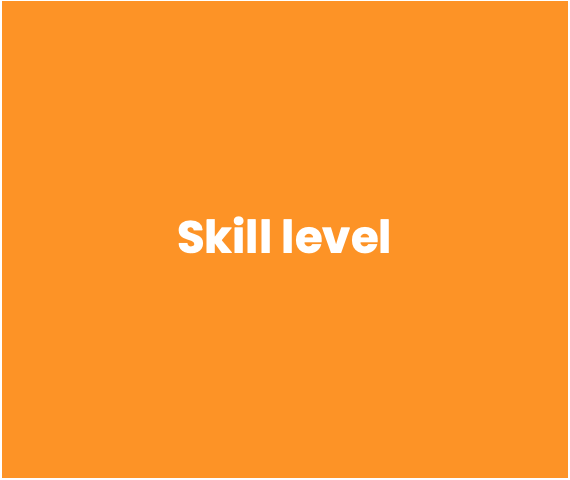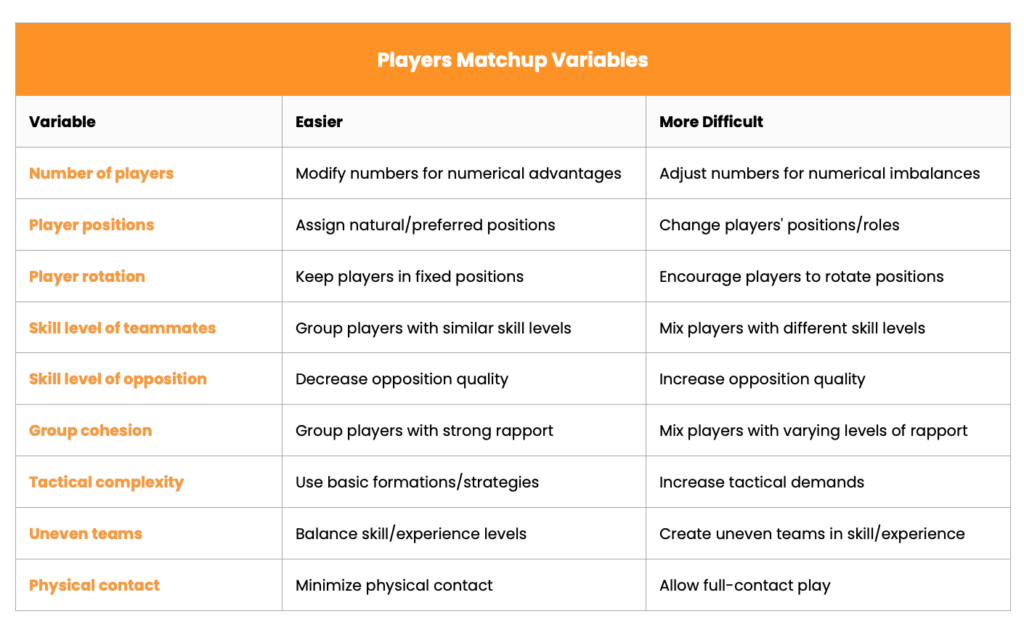Why You Should Change Your Activity
As a coach the skill of making changes to activities is crucial for ensuring the players’ development, enjoyment, and safety. Learning to identify when a change is needed is a skill in itself and knowing what changes to make and how is another skill altoghether.
Here are five reasons why you may want to make a change to an activity:

Player safety: If you notice that an activity poses any safety risks, such as collisions, falls, or overexertion, it’s essential to modify the activity to prevent injuries.

Skill level: If the activity is too difficult or too easy for the players, it’s important to adjust the challenge to match their skill level, promoting growth and preventing boredom or frustration.

Engagement: If the players are losing interest in the activity, changing it can re-engage them, ensuring they stay motivated and continue learning.

Group dynamics: If an activity is not working well for the group size or there are issues with team cooperation, modifying the activity can improve group dynamics and encourage collaboration.

Learning objectives: If the activity isn’t helping the players learn or develop the targeted skills, you should modify it or introduce a new activity that better addresses the desired learning outcomes.
When You Should Change Your Activity

Uneven challenge
If you notice that some players are easily completing the activity while others are struggling, you may need to adjust the difficulty to accommodate different skill levels. You can do this by modifying the rules or adding constraints for more advanced players.
Disengagement
If the players seem bored or disinterested, look for cues such as lack of focus, low energy, or lack of participation. In these cases, consider changing the activity to something more engaging or introducing a fun and competitive element.
Repetition fatigue
If the players have been doing the same activity for an extended period, they may become fatigued, both mentally and physically. Look for cues like decreased performance, lack of enthusiasm, or increased errors. Switch to a different activity that targets a different skill set.
No progress
If you observe that the players aren’t improving in the targeted skill or understanding the key concepts, consider changing the activity to better address the learning objectives. Focus on breaking down the skill into simpler components or using different teaching methods to help players grasp the concept.
Frustration
If players become frustrated, they might exhibit signs like negative body language, complaints, or disengagement. In this case, modify the activity to make it more manageable, or break it down into smaller steps to help players grasp the concept.
How To Make Your Changes
As a youth soccer coach, there are two primary methods for implementing changes in an activity: the stop method and the on-the-fly method.
- The Stop Method: This approach involves pausing the activity to make adjustments before resuming play. When using the stop method, follow these steps:a. Halt the activity: Call a break in the action, ensuring all players stop and pay attention.b. Address the issue: Explain the reason for the break and the changes you plan to implement, making sure players understand the adjustments.c. Gather feedback: Ask for player input to ensure everyone feels involved and valued. This can also help uncover any additional issues or suggestions.d. Make changes: Implement the necessary adjustments, whether it involves repositioning players, modifying the playing area, or altering the rules.e. Resume the activity: Once the changes are in place, restart the activity and closely monitor its effectiveness.
- The On-the-Fly Method: This approach involves making changes to the activity while the players continue playing. When using the on-the-fly method, follow these steps:a. Observe: Identify the issue that needs to be addressed while the players are engaged in the activity.b. Communicate: Verbally instruct the players on the necessary adjustments, ensuring they can hear and understand your directions while continuing to play.c. Implement: Allow players to make the required changes during the course of the activity, whether it’s adjusting their positions, adapting to new rules, or altering their playstyle.d. Monitor: Keep a close eye on the effectiveness of the changes, ensuring they address the issue and positively impact the activity.
Both the stop method and the on-the-fly method can be effective in different situations. The key is to determine which approach is best suited for the specific issue you need to address, ideally if you do not need to stop the activity then don’t.
What To Change?
Typically the most common reason for changing your activity is to adjust the difficulty level and make the activity easier if your players are struggling and not learning or to make it more difficult and to challenge them more below are three tables which list different variables you can change to adjust the difficulty


